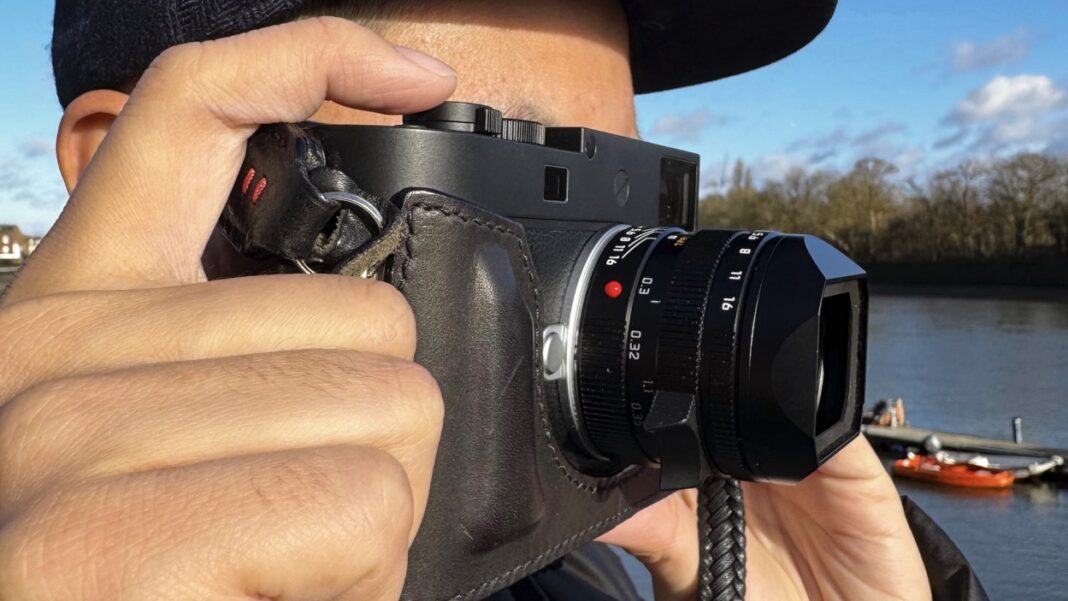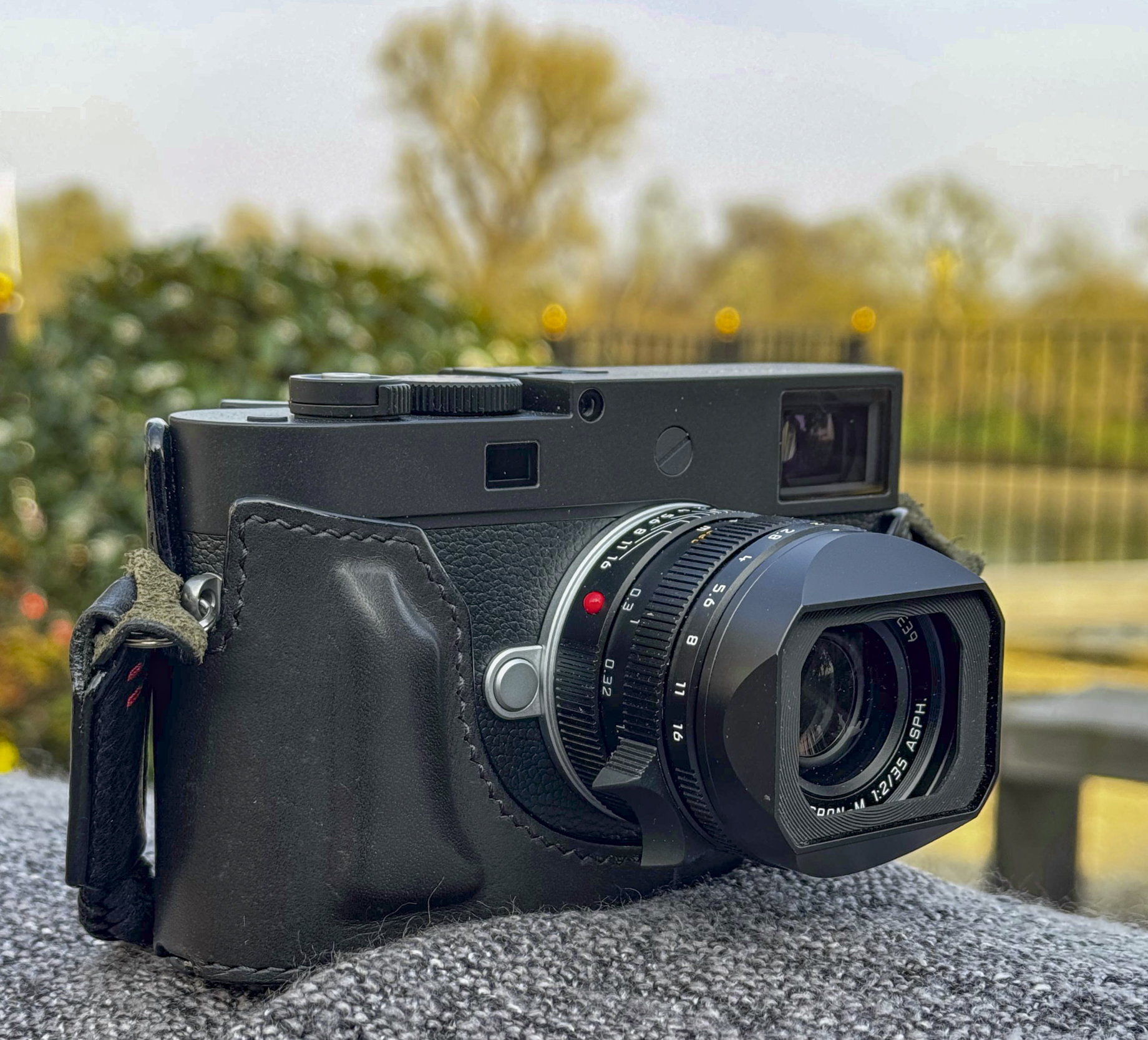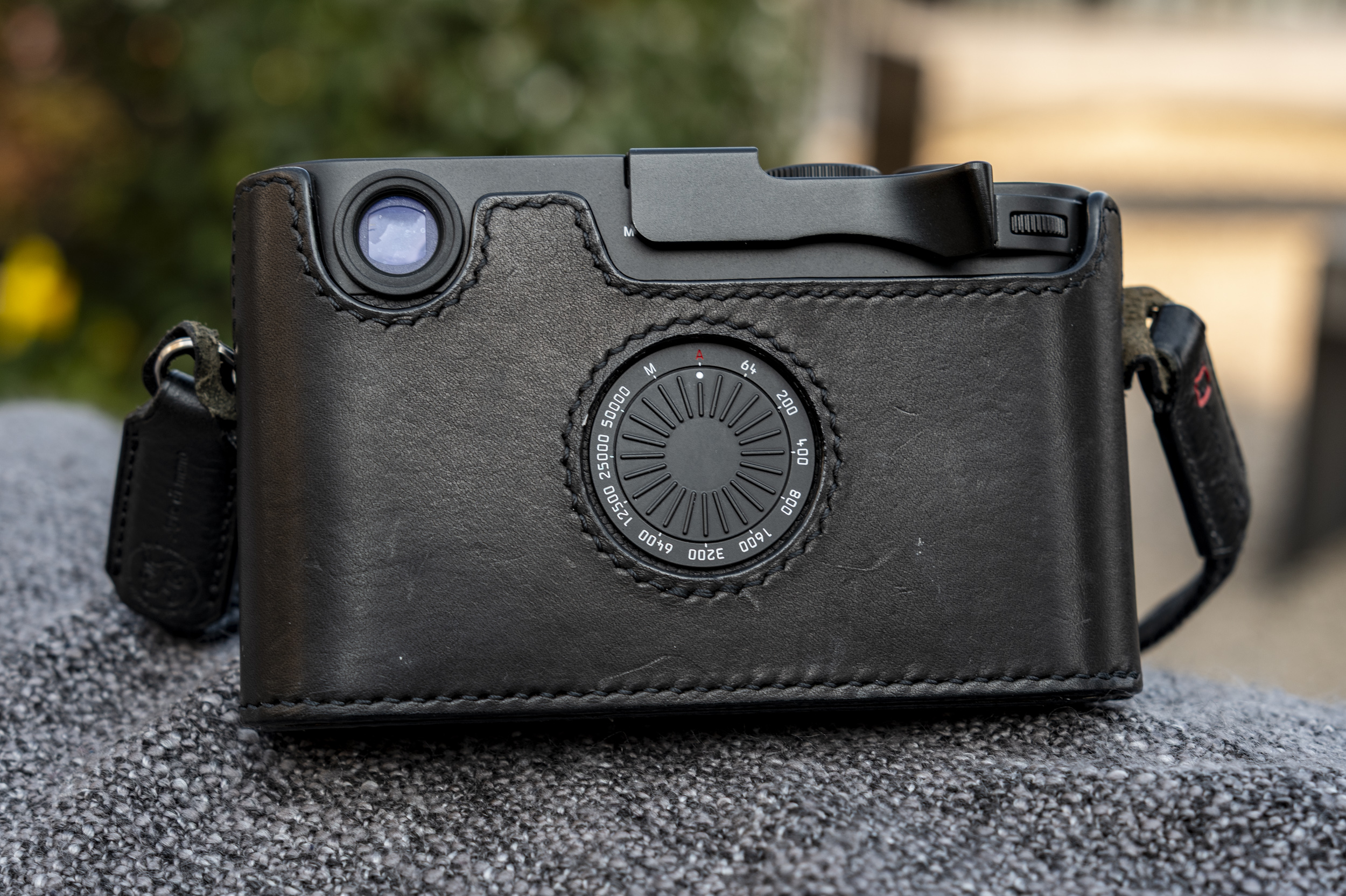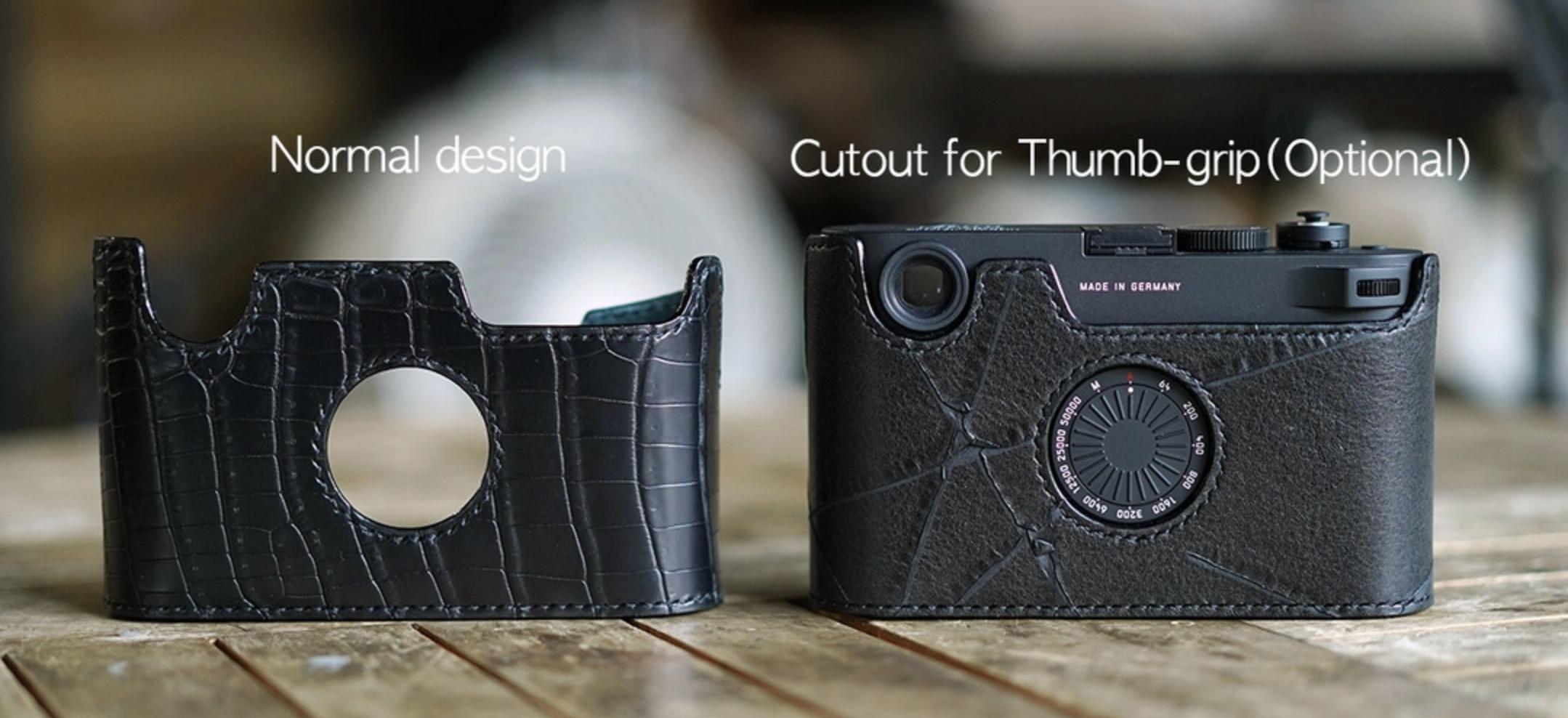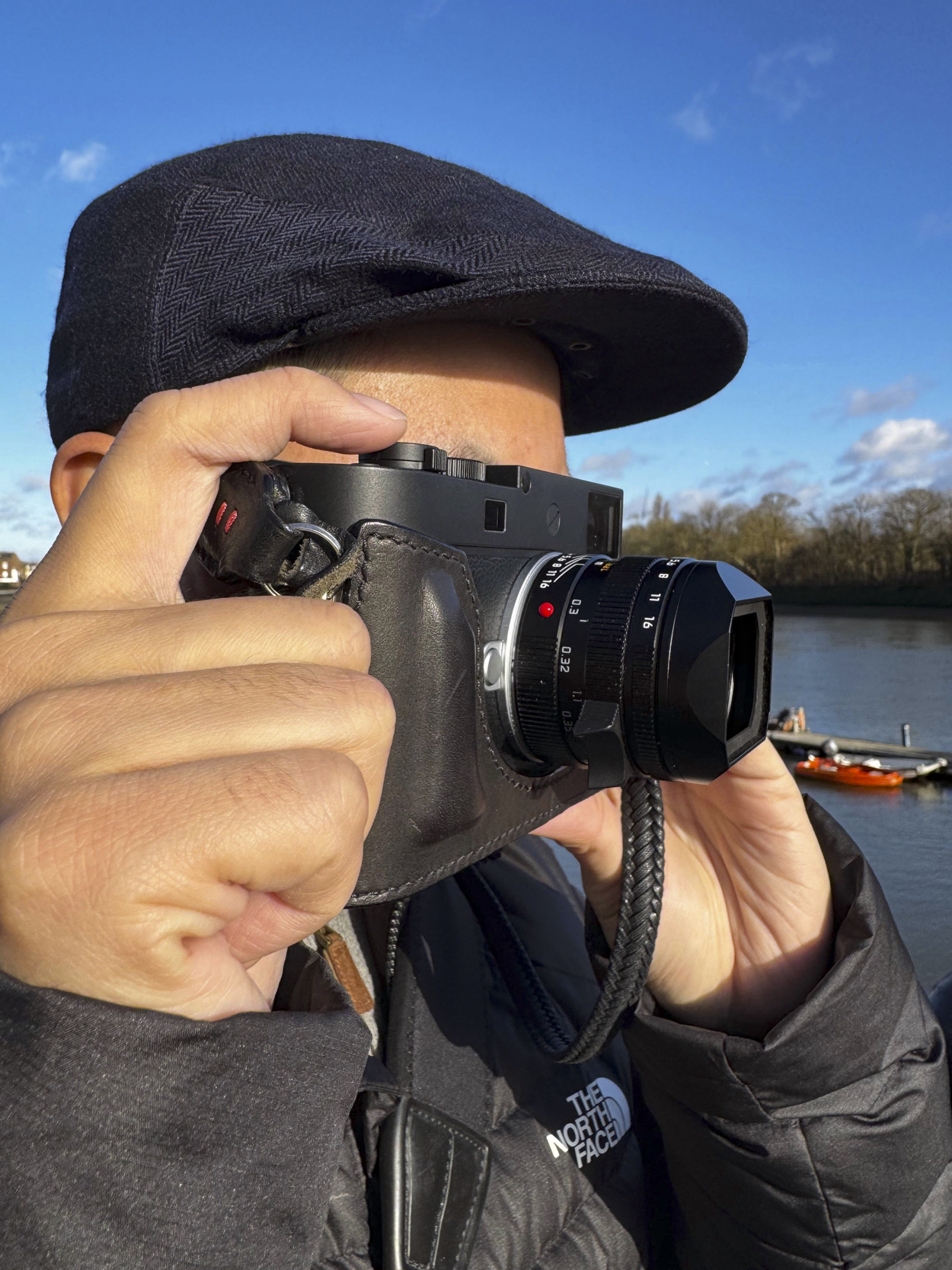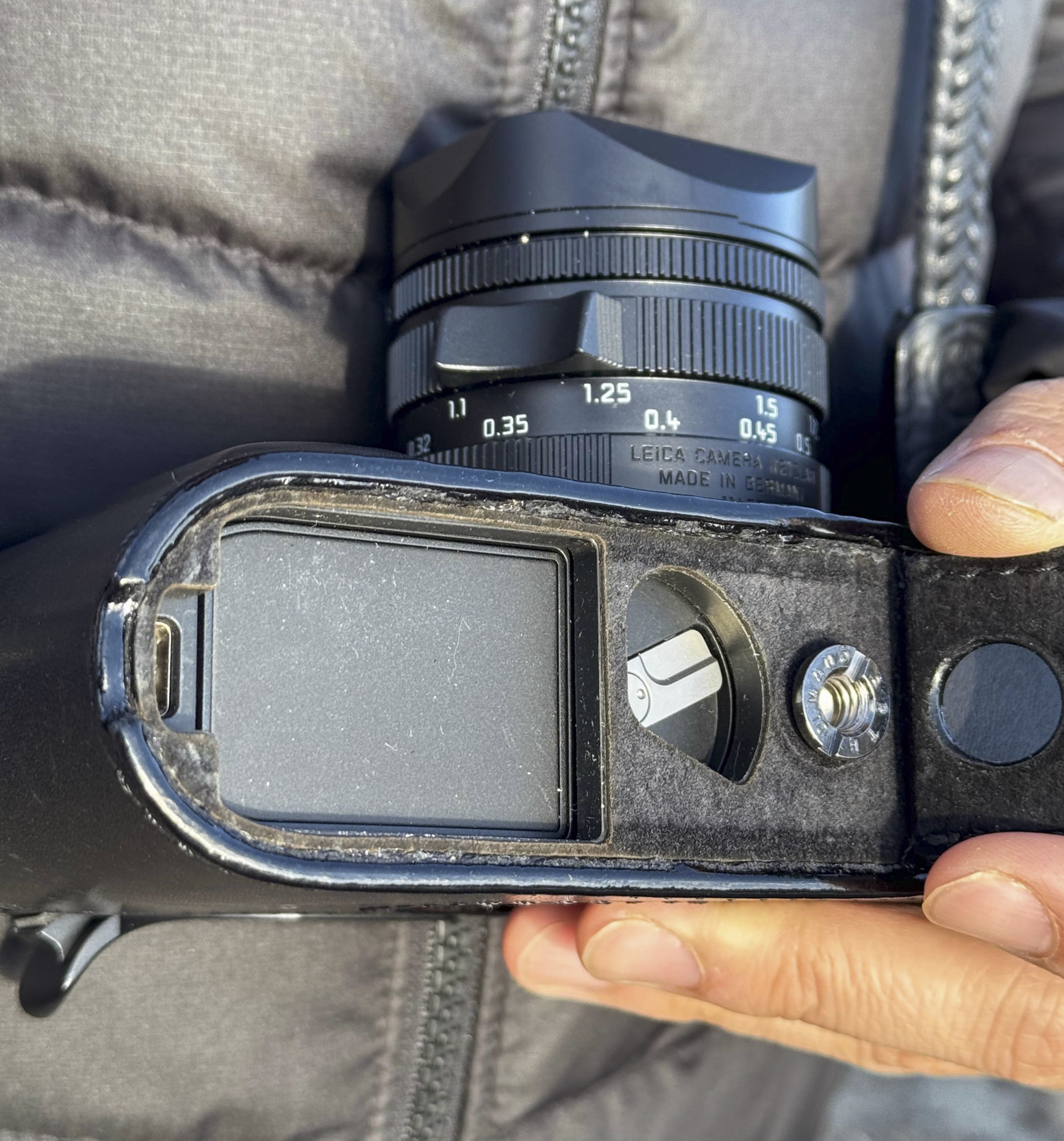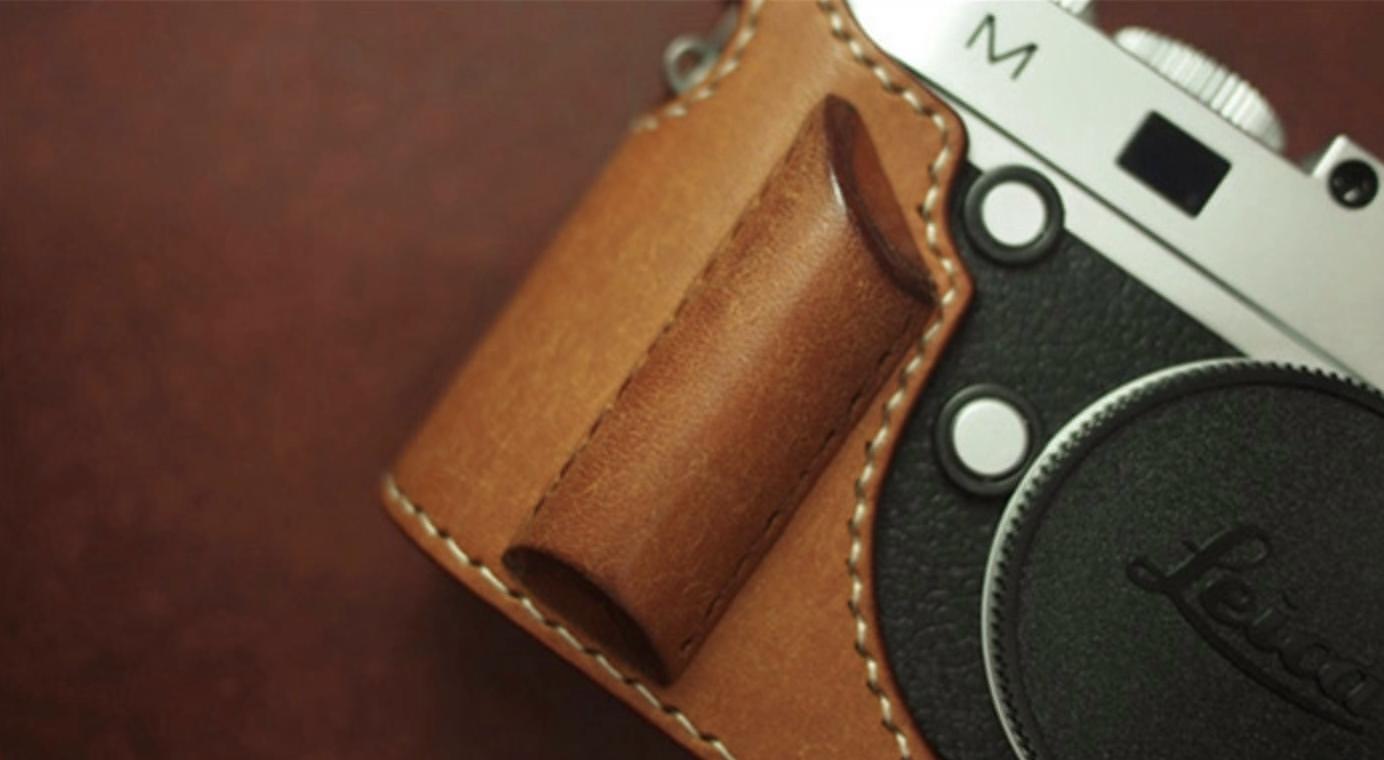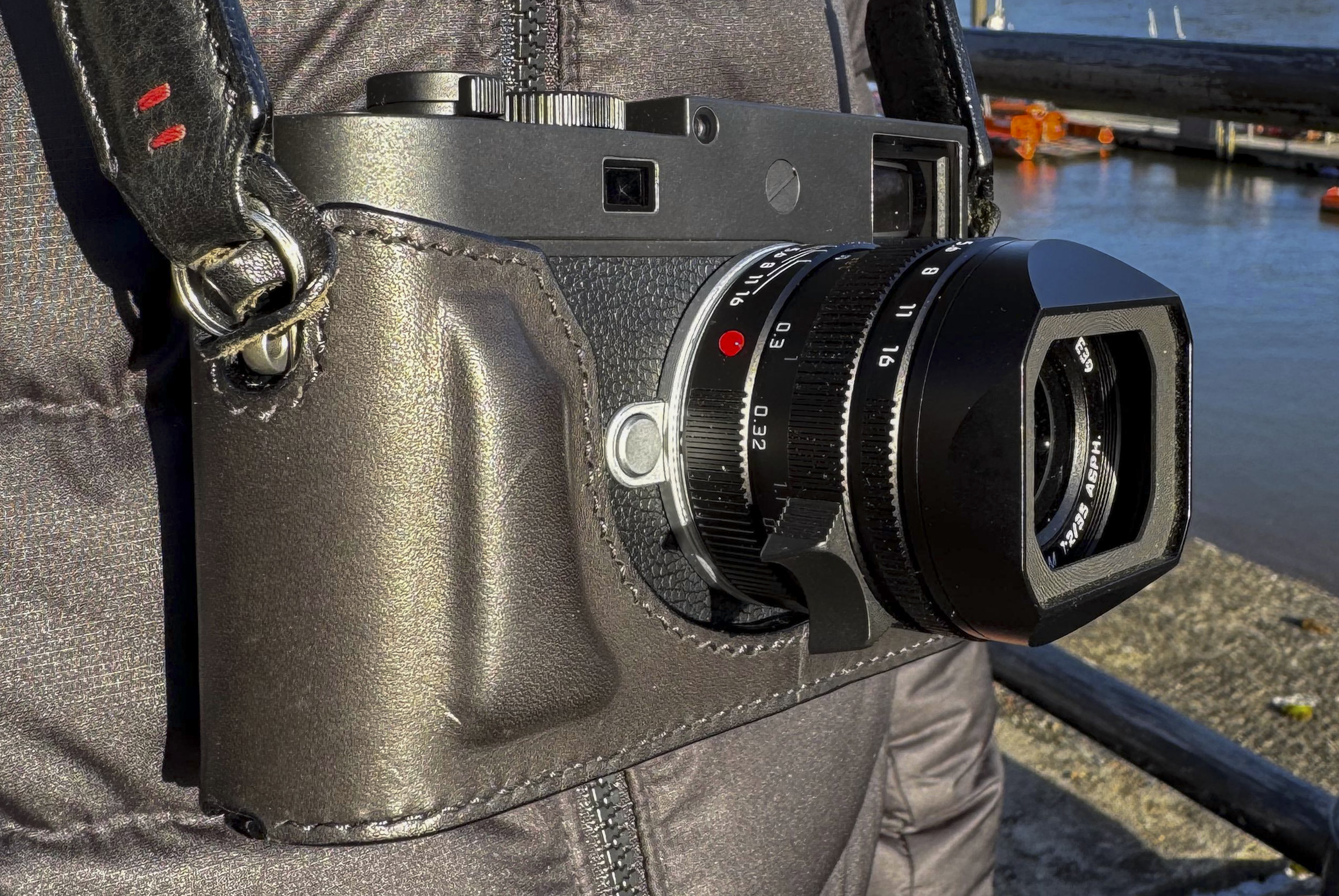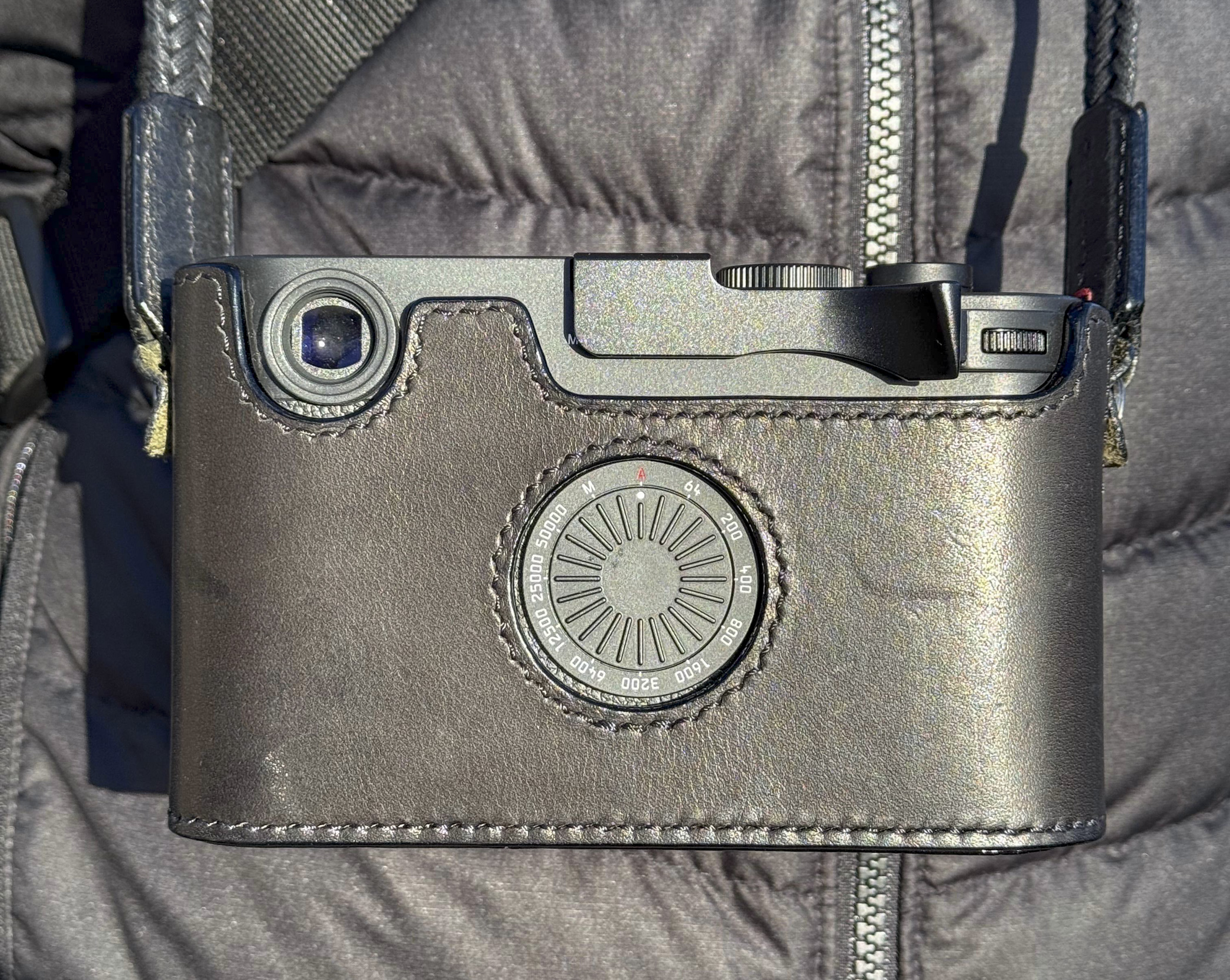The Arte di Mano M11-D case is a product that ideally complements Leica’s workmanship and reputation for quality. It is the latest in a long line of these Korean-made half cases that we have reviewed over the years. Apart from quality, consistency is the byword.
As with other cases we have reviewed, the Arte di Mano M11-D case comes in a wide variety of leather finishes and colours. And there are several additional options to ensure that the case is tailored to your camera and specific tastes.
Look no screen
Unlike other digital cameras, the Leica M11-D is an odd one out in that it has no rear screen. Just as it would have been in the days of film, the leather extends across the back of the camera. A single “ocular” cutout provides access to the new ISO adjustment dial.
It is this circle which tells us a lot about the quality and workmanship. It fits perfectly around the dial. There is no visual impression of poor alignment. That sin is all too easy to commit when carving out a circle.
The review case is in the standard, smooth leather which, in my experience, ages well. All the edges are “cauterised” with a shiny material. That adds a refined finishing touch and is much preferable to seeing the rough edges of the leather.
This protection appears to be sturdy, and I have never experienced cracking or deterioration on similar cases in the past.
Impeccable workmanship
The close fit and accuracy of edge alignment is impeccable, as I have come to expect from Arte di Mano. The review case is designed to allow the use of a thumb grip, as you see in the pictures. However, a version without the grip cutout is available as an option.
The front of the case is perfectly aligned with the contours of the camera. A small finger grip adds to the experience of gripping the camera. It works well in tandem with a thumb grip. An alternative larger grip, the Aventino, is also available. Undoubtedly, this is an advantage if you often use fast, heavy Noctilux lenses.
On the inside
The interior of the case has a plush suede-effect finish which is designed to protect the camera body. This protection extends to the bottom door. While the review case is supplied with a standard black interior, alternative colours are available at no extra cost.
A large folding leather door on the base of the camera provides access to the USB port, the battery lever and the battery/SD card compartment. This door is well engineered and shuts firmly. A small tab at the far end makes it easy to reopen.
Added height
The Arte di Mano M11-D case does add 8mm depth to the camera, an inevitable feature where the cases have access doors of this type. The height of the camera with the case attached is 88mm (my measurements). This compares to the 80mm height of the naked camera. The case, in standard form, adds around 80g to the weight of the M11-D.
The review case is attached to the camera using the tripod thread, with an attached coin-operated screw. There is a cutout in the bottom cover to allow use of a tripod screw.
Battery and card access
The battery is removed and replaced as normal. However, removing the SD card can sometimes be rather fiddly because of lack of clearance. I managed well enough using my fingernails, but a pair of tweezers would be helpful.
Decisions, decisions
A large part of the fun is in designing your case. Choosing the leather style, the colours of both leather and interior plush and the colour of the stitching can be confusing, but rewarding. But do curb your enthusiasm. I once let my imagination run riot and ended up with a Christmas tree of a case which lost its novelty by the twelfth night.
I am something of a traditionalist. Black leather, black interior and black stitching was my uninspiring choice for the review case — but it’s my favourite. Of course, if you want your camera to look more traditional, a brown case is the obvious choice.
Options
The advanced battery door on the review camera is itself an option, an additional USD 60. If you decide not to have the bottom door, the standard case comes with a USB-port flap. Dispensing with the access door is viable if you always charge your battery in situ and seldom wish to replace the SD card. To have to remove the case for frequent access is not a good idea.
Having so many choices is nice, and underlines the personal nature of the Arte di Mano offering, but it can also be stressful. Everything looks so delightful on the website that you should set aside a few hours to ponder your ideal case.
The Aventino grip, which greatly improves handling of the camera, is a USD 100 extra. Alternatively, you can stick with the standard, smaller grip but specify the thumb-grip cutout (USD 30) to allow the fitting of a grip to the hot shoe. In a further personal tweak, you can add “personal words” to be engraved on the case for a further USD 10. The world is your oyster.
For full details of leather types, colours and options, visit the Arte di Mano website here.
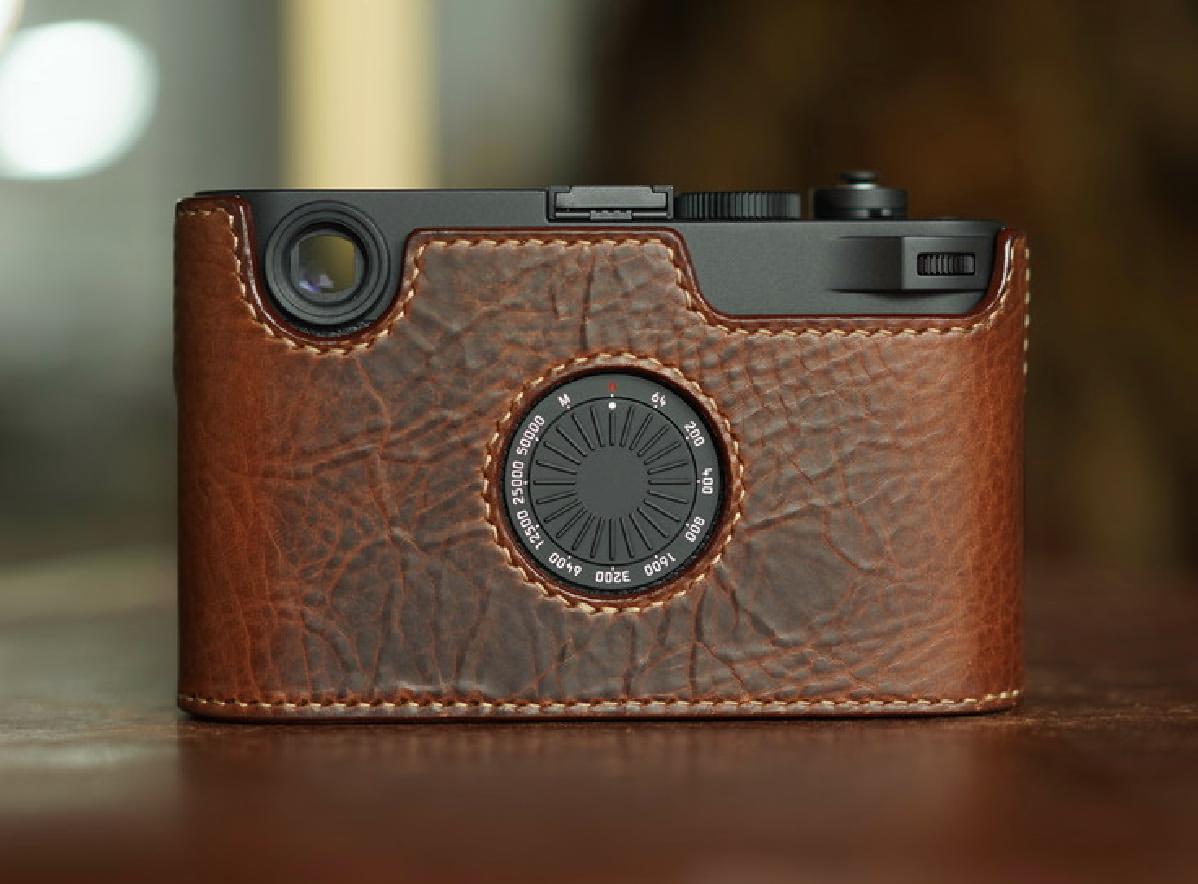
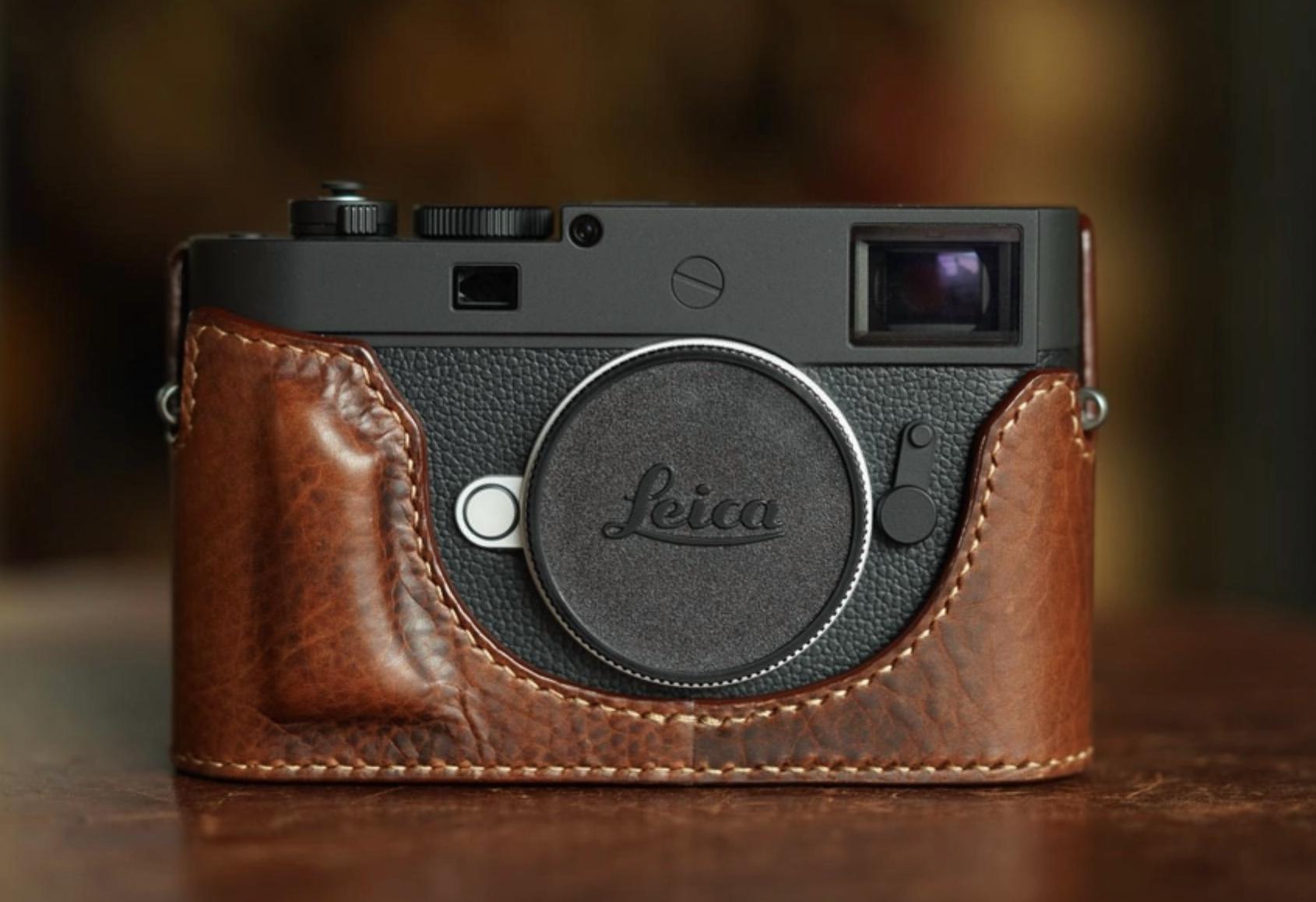
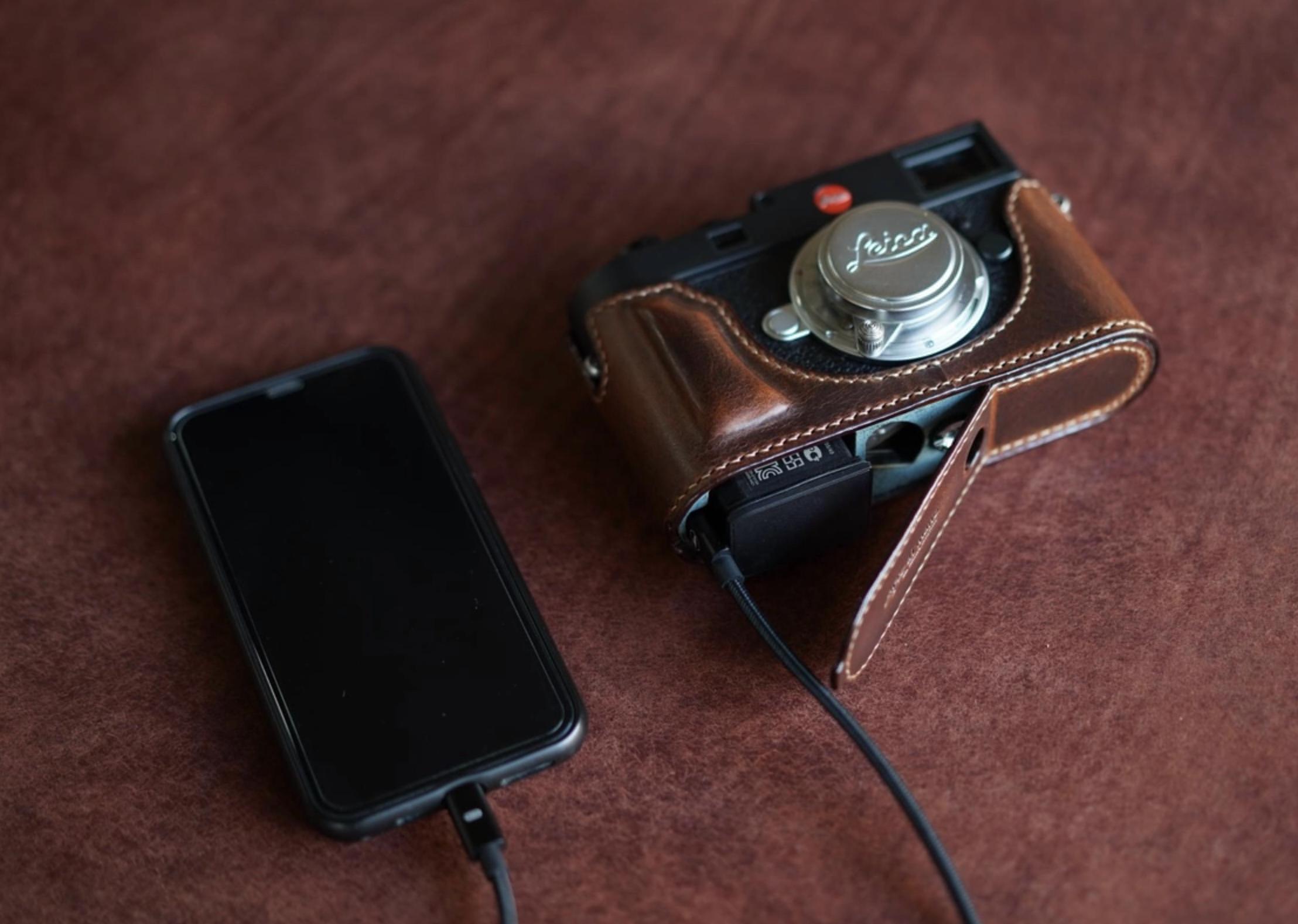
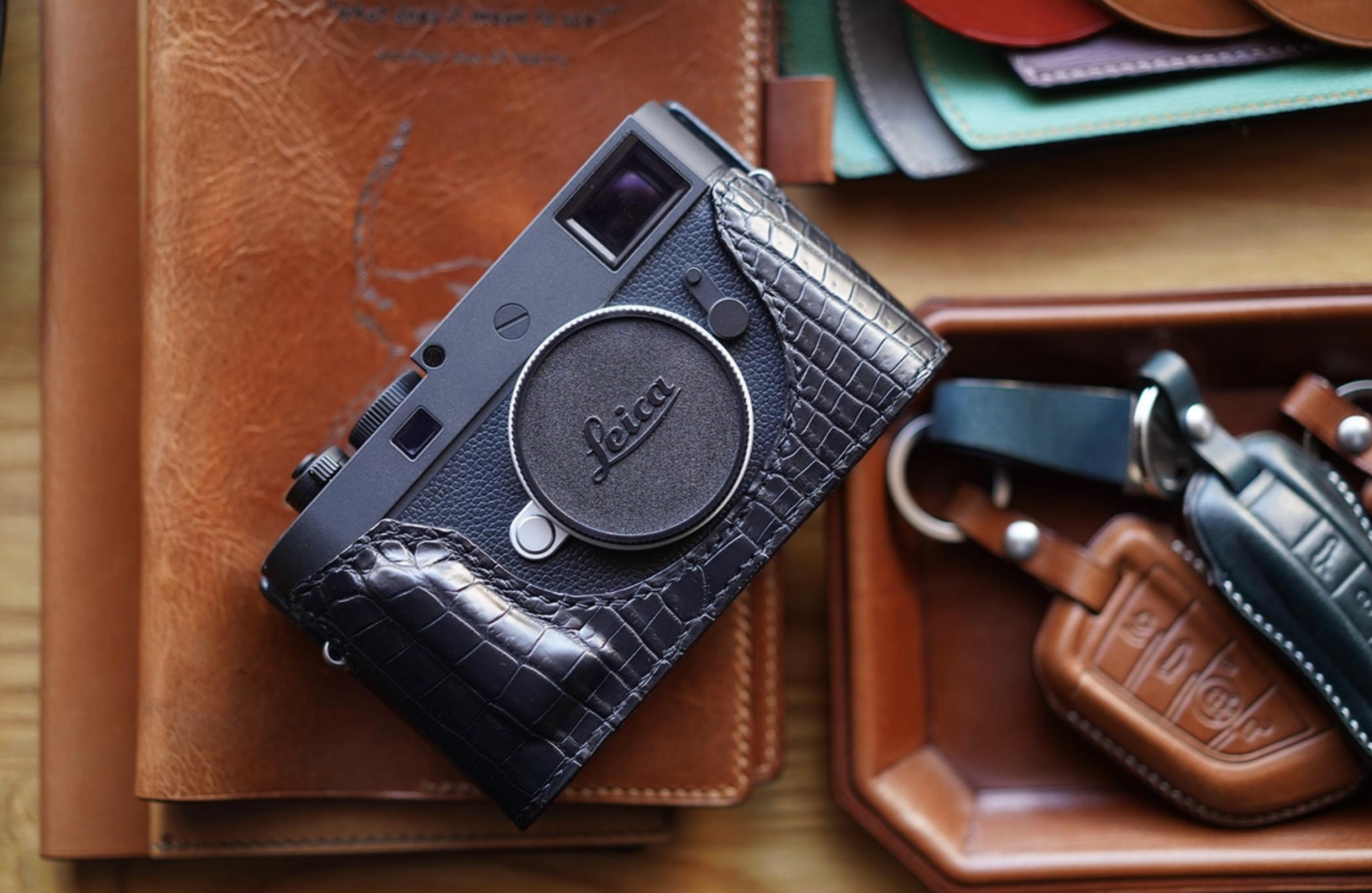
Direct supply
All Arte di Mano cases are hand made to order at the JnK Handworks studio in Seoul. The waiting time is currently 4–6 weeks, including delivery time.
The review case, with the advanced battery door and thumb-grip cutout, retails at USD 589. Shipping to the UK is now USD 55 and delivery takes between three and four days. Additional handling and tax charges could be levied at the destination.
Arte di Mano’s workmanship is exceptional, and Sejun Kim and his team are helpful and reliable. They take a personal interest in every order, and this helps offset the pain of the cost. There are many much cheaper camera half-cases on the market, including no doubt some for the Leica M11-D. But it is difficult to find one that is so well-made and so perfectly aligned with your camera as is this Arte di Mano M11-D case.
Why buy a leather half case?
A half case is a traditional Leica accessory, going right back to the days of the Leica I, one hundred years ago. Until the end of the century, it was common to see cases with a dangling front cover, often secured by press-studs, big enough to accommodate a standard 50mm lens.
With the popularity of larger lenses and kit zooms, the front part of the case has all but disappeared. A body-only half case is now the one to go for.
Protection is the obvious primary function of a case such as this. It certainly protects the bottom of the camera from disaster and, in some cases, can protect the edges of the top plate. A further advantage is that a half case improves grip, especially if equipped with a small bump, as with this review case, or a more substantial grip.
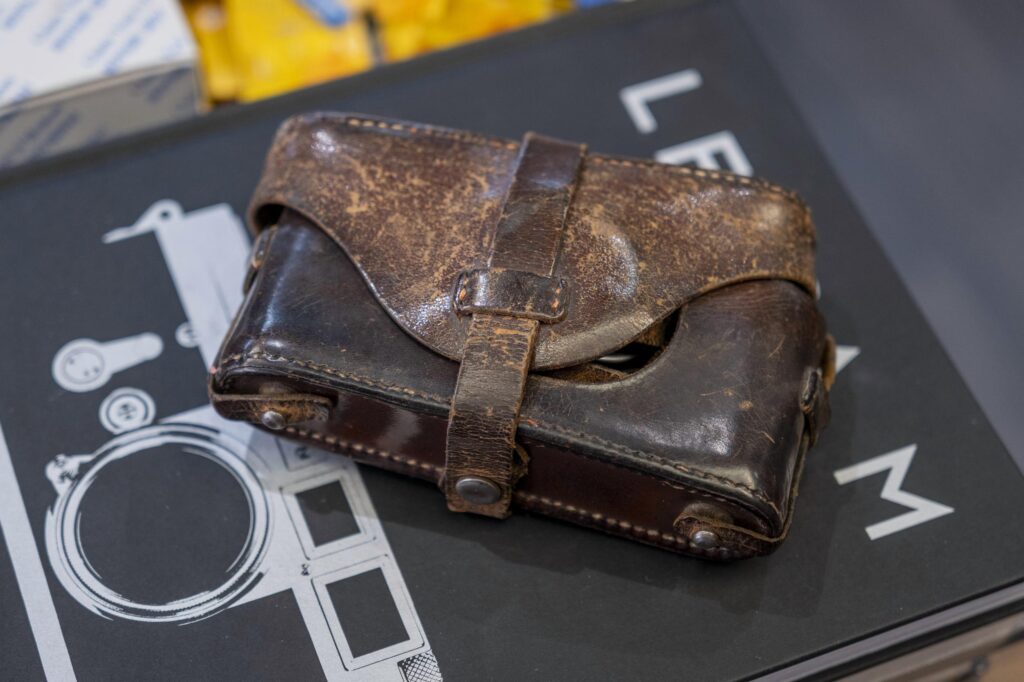
Yet, the main attraction of a half case is because it looks good and helps distinguish the camera. It’s a nice thing to have.
Not everyone agrees, naturally. There are many who dislike half cases and prefer the more technical approach, such as fitted hand grips. As always, it’s a matter of choice. And when it comes to choice, I’m a sucker for a lovely camera half case.
Update: Our Arte di Mano case for the Leica Q3 and 43
A year ago, we reviewed the Arte di Mano case for the Leica Q3. In a break from our traditionalist tendencies, this case was made in blue Buttero leather with white stitching. Quite a bobby dazzler, as they say where I come from.
It is still going strong, although the case said a fond farewell to its original owner, the Leica Q3. It has now been adopted by the new upstart, the Leica Q3 43. The case fits perfectly, which is no surprise, but it’s worth saying. If you bought an Arte di Mano case for your Q3, you can go out and buy a Q3 43 without worrying that it won’t fit.
One less excuse. In our case, the blue leather complements the great leatherette coat of the hot 43mm newcomer. It looks better than it did on the all-black Q3.
More Arte di Mano reviews on Macfilos
| Leica Q3 and Q3 43 | CL, D-Lux 7, C-Lux |
| Leica Q2 case | Leica M11 |
| Leica M10-D case | Leica M10 |
| Leica Q case with Aventine grip | Case for Leica M240 and fitted handgrip |
| Leica M240 and Monochrom | Leica M7 case |
Make a donation to help with our running costs
Did you know that Macfilos is run by five photography enthusiasts based in the UK, USA and Europe? We cover all the substantial costs of running the site, and we do not carry advertising because it spoils readers’ enjoyment. Every amount, however small, will be appreciated, and we will write to acknowledge your generosity.

